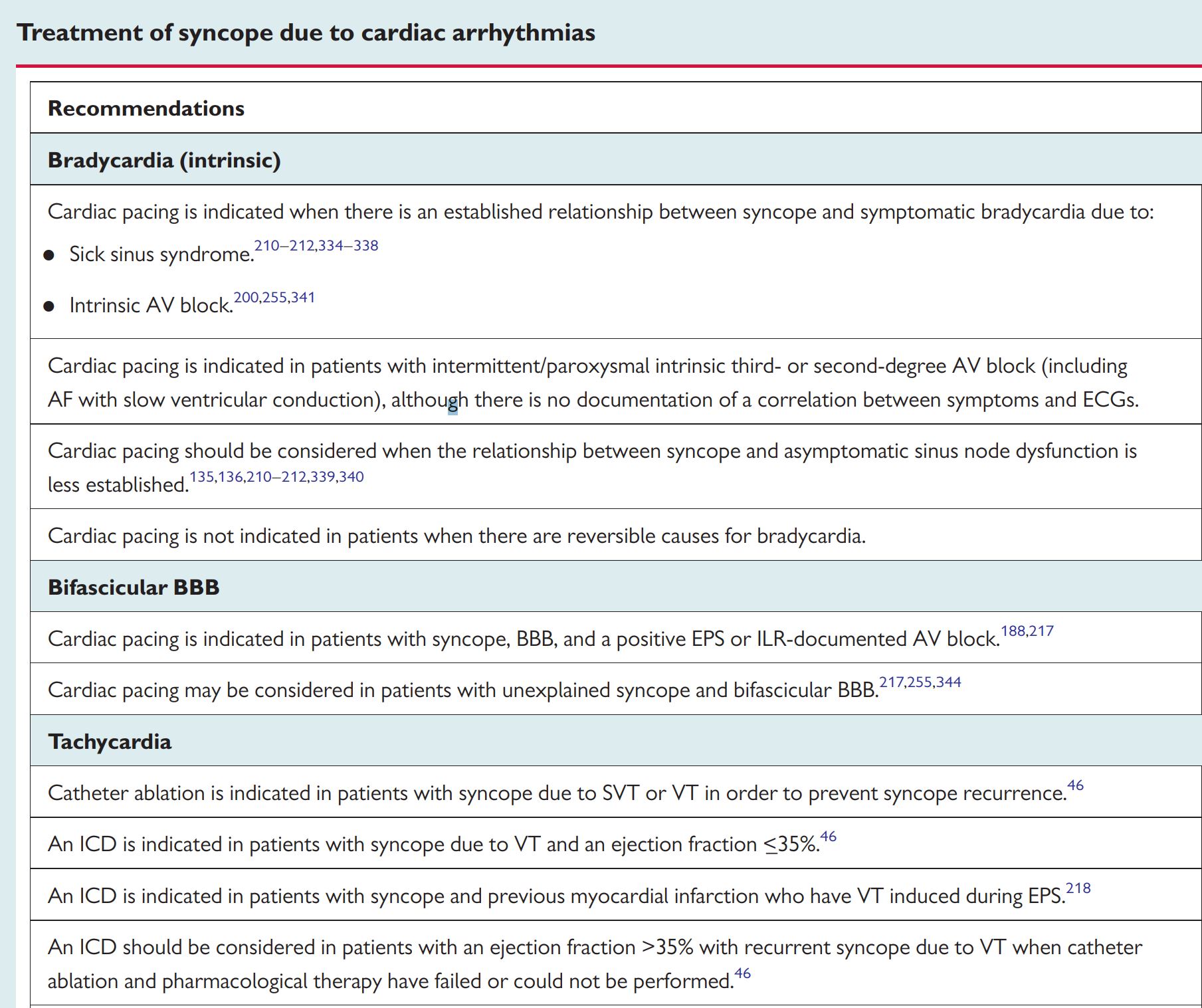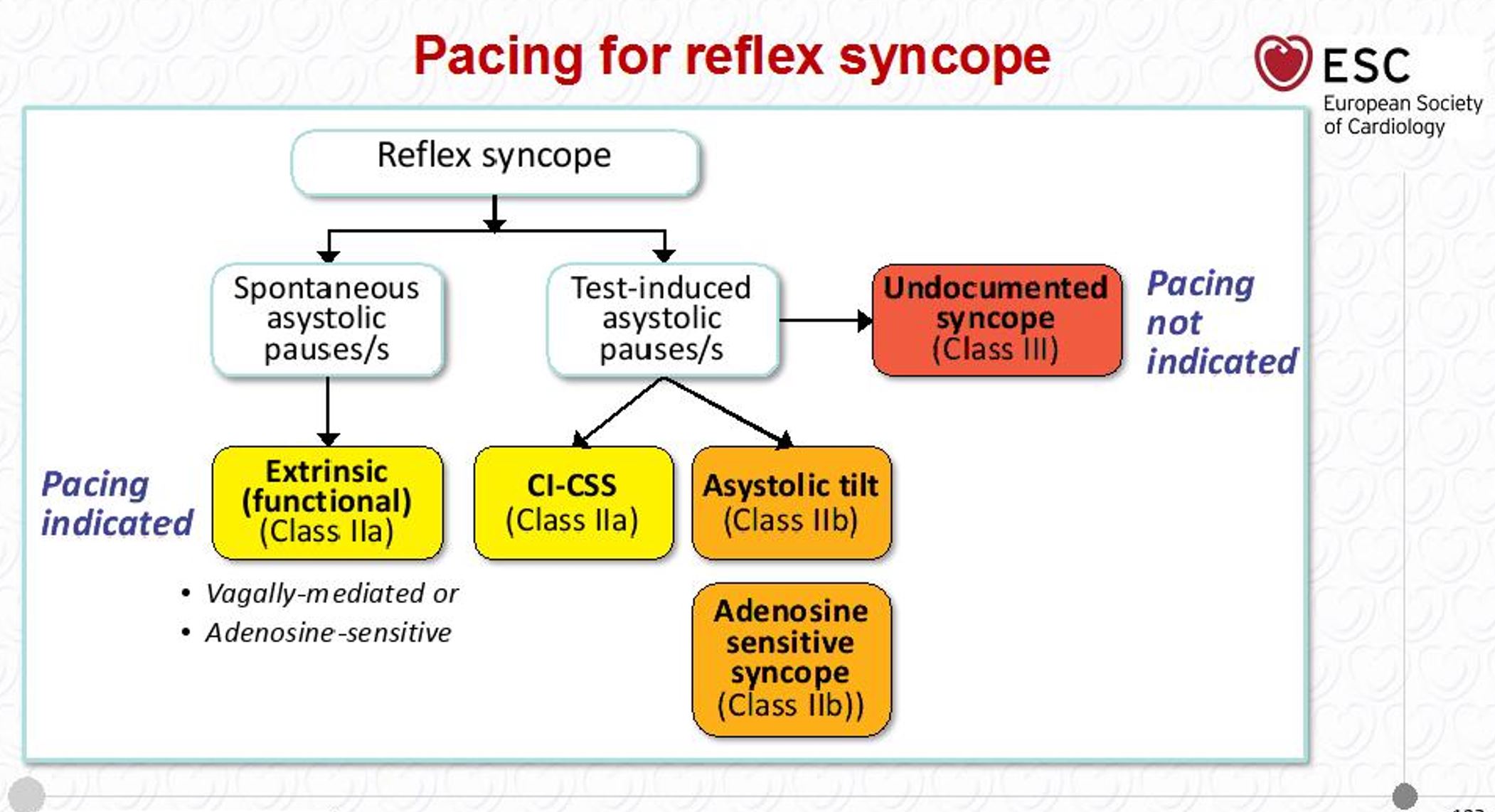Paroxysmal AV block Cardiac Pacing
Eruopean Society of Cardiology : Indications for Cardiac Pacing

- Milena et al conducted a 4 year study to study the efficacy of cardiac pacing in patients with documented paroxysmal AV block.
- The endpoints of the study focused on syncope recurrence and time taken till first recurrence of presyncope.
- Recurrence was only seen in patients without structural heart disease and the mechanism was related to hypotension, onset of atrial fibrillation or reflex mediated.
- Significantly lower recurrence rates were seen in patients with documented paroxysmal AV block and it was also concluded that cardiac pacing could be offered more confidently to patients with structural heart disease."Syncope in patients paced for atrioventricular block. | Semantic Scholar".
- The Syncope Unit Project -2 (SUP-2 ) studied carried about by Brignole et al included patients with a history of recurrent syncope and positive findings on carotid sinus massage/ tilt table testing/ implantable loop recorders.
- Such patients were fitted with dual chamber pacemakers and recurrence rates were followed up.
- Using a standardized algorithm in their approach, they came to the conclusion that pacing can be can be offered to patients with positive findings on carotid sinus massage/ tilt table testing/ implantable loop recorders.
- An efficacy of 3 years was maintained. [1]
- Furthermore, similar results were also found in those with intrinsic AV block patients and in tilt table positive asystolic reflex syncope patients.
- The ISSUE 3 study also produced similar results where TT- negative asystolic reflex syncope patients were concerned. [2]

- ↑ Brignole M, Arabia F, Ammirati F, Tomaino M, Quartieri F, Rafanelli M; et al. (2016). "Standardized algorithm for cardiac pacing in older patients affected by severe unpredictable reflex syncope: 3-year insights from the Syncope Unit Project 2 (SUP 2) study". Europace. 18 (9): 1427–33. doi:10.1093/europace/euv343. PMID 26612880.
- ↑ Brignole M, Menozzi C, Moya A, Andresen D, Blanc JJ, Krahn AD; et al. (2012). "Pacemaker therapy in patients with neurally mediated syncope and documented asystole: Third International Study on Syncope of Uncertain Etiology (ISSUE-3): a randomized trial". Circulation. 125 (21): 2566–71. doi:10.1161/CIRCULATIONAHA.111.082313. PMID 22565936.